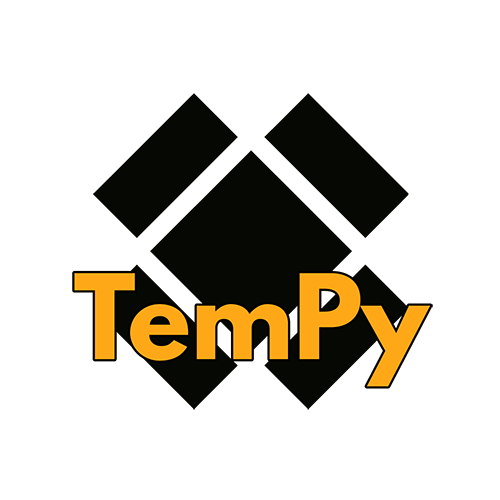
OOP Python Templating Engine.
This project is maintained by Hrabal
Hosted on GitHub Pages — Theme by orderedlist
Let’s Build an App
In this tutorial we’ll build a simple webapp using Flask, SQLAlchemy and Tempy. This tutorial is similar to many others but for the templating part of our app we’ll use TemPy, instead of Jinja2 or Mako. This tutorial is based on the great Miguel Grinberg’s Flask Mega Tutorial. If you are new to Flask and/or SQLAlchemy, please read his tutorial first.
We’ll cover all the steps from zero to a working Contact Book app, focusing more in the TemPy parts. If you are confident using Flask and SQLAlchemy, you can skip to the TemPy in action part of this tutorial.
You can find the complete code on https://github.com/Hrabal/TempyExample.
Check we have what we need
First we’ll check for everything we need to build our app. In this tutorial we’ll use Python >= 3.6 and sqllite3.
Open a terminal/shell window and type the following to check if we have Python3 installed:
$ python3 --version
Python 3.7.0
If you get an error or the output shows a Python version lower than 3.6, please go to python.org and install the latest stable Python3 version.
Same thing for Sqlite3:
$ sqlite3 --version
3.24.0 2018-06-04 14:10:15 95fbac39baaab1c3a84fdfc82ccb7f42398b2e92f18a2a57bce1d4a713cbaapl
If you get an error, you probably don’t have sqlite3 installed on your machine. To get SQLite3 follow this tutorial.
Setup
Now we’ll start making our project. Go back to the shell window and type these commands to create the project folder structure:
$ mkdir tempy_app
$ cd tempy_app
$ mkdir {static,templates}
Then we fire a vitualenv on our project’s dir:
$ virtualenv -p python3.7 venv
Running virtualenv with interpreter /usr/local/bin/python3.7
Using base prefix '/Library/Frameworks/Python.framework/Versions/3.7'
New python executable in /Users/user/tempy_app/venv/bin/python3.7
Also creating executable in /Users/user/tempy_app/venv/bin/python
Installing setuptools, pip, wheel...done.
$ source venv/bin/activate
Now that we have activated our virtualenv, we’ll use the virtualen’s Python interpreter, tools and plugins. But we don’t have the plugins yet, so we’ll install all the Python modules that we need for this project using pip.
First, make a requirements.txt file with the list of the needed modules:
(venv)$ touch requirements.txt
Open your favourite text editor and edit the file requirements.txt adding these lines:
bcrypt==3.1.4
SQLAlchemy==1.2.13
sqlalchemy-migrate
Flask==0.12.2
Flask-Login==0.4.0
Flask-SQLAlchemy==2.2
tem-py
Save the file, go back to the shell and run:
(venv)$ pip install -r requirements.txt
requirements.txt contains the list of all the packages and modules that we’ll be using to build the app.
Now we are ready to build a blog using TemPy, Flask and SQLAlchemy! Go to the next section: Base Files